13. Silver Gelatin P.O.P. — Recipe #2, version 2 |

|
November 18, 2020. Following the hints that Baker offers in the 1st edition of Photographic Emulsion Technique, I increased the amount of citric acid from 2 g to 2.5 g. Supposedly, this increases contrast. If so, I was too conservative. I don't think I see an increase, but P.O.P. exposure is so finicky, I'm not swearing to that. Nevertheless, it's a pretty batch of emulsion. 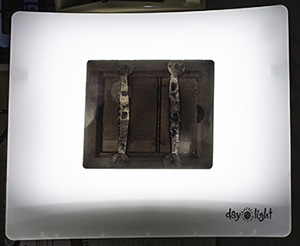
My new, larger light panel arrived in time for this batch — a Carex Day-light Classic Plus light therapy lamp. It's big enough for up to an 8 ½ x 11 inch print. (Shown is a 4x5 printing frame.) It's not LED, but Carex claims it blocks 99.3% of UV light and rates it at 10,000 LUX. From just one day's experience, it seems to be an excellent printing light. It's almost as fast as my UV box, without the worries about UV light and eye health. |
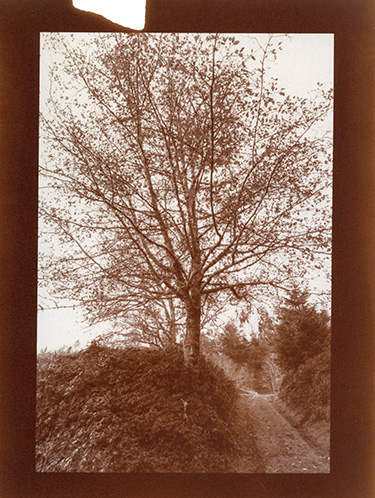
Left: 8" x 11" print, 7 minute exposure with Carex "Day-light Classic" There's a couple of things going on here. First, and most obvious, is the patch of missing emulsion. If I have one complaint about this recipe it's that it is almost impossible to see the emulsion on the paper after it is coated, even when it's still wet. Every other emulsion I make is visibly glossy while wet. That gloss pretty much disappears when the emulsion dries, so I outline the wet emulsion with a watercolor crayon right after coating. Dry emulsion is hard to see under safelight. This P.O.P recipe is almost as invisible wet as dry. Second is the color of the border. It is not maximum density, so it's more a burnt sienna than dark reddish-brown. If this image were going to go in a portfolio, I'd make the negative darker so that I could increase the exposure time enough to get a deep brown border without the image going too dark. One of the challenges of P.O.P. is also its artistic potential — the colors change with the density. Controlling those colors is the challenge. I haven't scratched the surface of fully understanding how. Work-in-progress. |
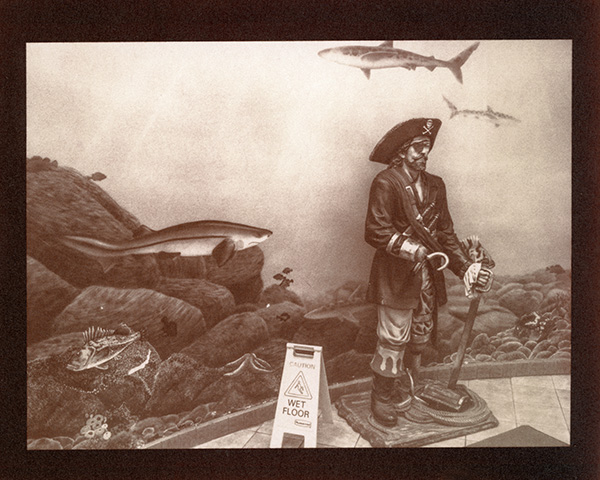
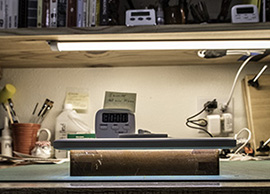
The negative for the pirate is close to perfect for this emulsion. The histogram is 31/19/27. It printed for 45 minutes with an LED light panel. |
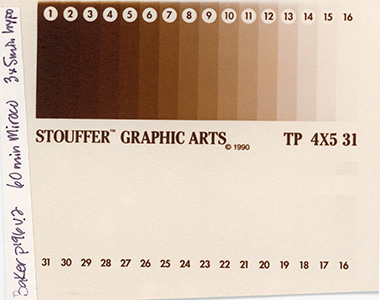
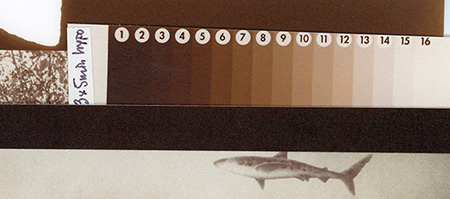
Above: A stack of the three prints. I don't know why the pirate picture is less orange than the step tablet. That question is at the top of my list of questions. It's a long list. |

|
| < A Few Observations on Recipe #1 vs. Recipe #2 > |